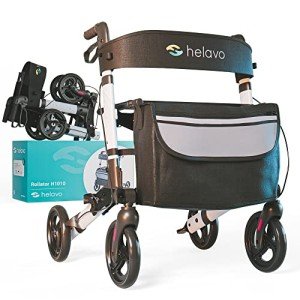The Evolution of the Modern Walker: A Comprehensive Look
Walking has actually long been a fundamental human activity, vital for mobility and self-reliance. The modern walker, an essential tool for those who require additional support while passing through the world, has developed considerably for many years. This article will check out the advancement, types, benefits, and often asked concerns about modern walkers, acting as a guide for anyone considering this mobility aid.
A Brief History of Walkers
The history of walkers can be traced back to the early 20th century. Originally designed for rehabilitation, the very first designs were fundamental and offered limited support. Nevertheless, as our understanding of mobility needs advanced, so too did the design and performance of walking help.
Timeline of Walker Development
| Year | Development |
|---|---|
| 1930s | The very first walkers were created, mainly for rehabilitation purposes. |
| 1960s | Introduction of foldable designs for easier storage and transport. |
| 1980s | Adoption of lightweight products, boosting portability without compromising strength. |
| 1990s | Introduction of walkers with wheels, facilitating smoother movement. |
| 2000s | Modern walkers incorporated with extra features such as seats and storage compartments. |
The evolution of walkers highlights not just developments in engineering and materials but likewise a growing awareness of diverse user requirements.
Types of Modern Walkers
Today, there is a variety of walkers available to accommodate different ages, mobility levels, and user choices. Below is a list of the most common types:
- Standard Walkers: Basic designs without wheels, using maximum support. Foldable Rollator Walker for those requiring substantial stability.
- Wheeled Walkers (Rollators): Equipped with 2 or four wheels, these walkers permit smoother movement. Lots of featured integrated seats for resting and storage for personal products.
- Posterior Walkers: Designed to promote a more natural walking design, these are used by people recovering from surgery or injury.
- Travel Walkers: Lightweight and collapsible, best for seniors and those on the go.
- All-Terrain Walkers: Built with bigger wheels and durable frames, ideal for outdoor use on uneven surface areas.
Comparison Table of Walker Types
| Type | Wheels | Seat | Stability | Portability | Best For |
|---|---|---|---|---|---|
| Standard Walker | No | No | High | Moderate | Users requiring max support |
| Wheeled Walker | Yes | Yes | Moderate | High | Active users needing mobility |
| Posterior Walker | No | No | High | Moderate | Rehab from injuries |
| Travel Walker | No/Yes | Optional | Moderate | Extremely High | Frequent travelers |
| All-Terrain Walker | Yes | Yes | Moderate | Moderate | Outdoor enthusiasts |
Advantages of Using a Modern Walker
Utilizing a walker can substantially improve the lifestyle for individuals with different mobility difficulties. Here's a breakdown of the primary benefits:
- Increased Stability: Walkers reduce the danger of falls, offering support and balance.
- Self-reliance: They empower users to move freely without reliance on others.
- Enhanced Posture: Walkers encourage users to preserve an upright position, which can reduce back discomfort.
- Versatility: With alternatives matched for different terrains and requirements, walkers can be tailored to private choices.
- Boosted Mobility: Many walkers are designed for ease of movement, permitting more active way of lives.
Often Asked Questions (FAQ)
1. What size walker do I require?
Picking the ideal size is vital for convenience and effectiveness. Ideally, walkers should be changed so that the handlebars are at wrist height when standing upright. A lot of models are adjustable for height.
2. Can I utilize a walker for long-distance walking?
While walkers supply outstanding support and stability, it is best to talk to a health care expert relating to long-distance use, as tiredness can set in in time.
3. Do I require a prescription to get a walker?
In the majority of situations, a prescription is not necessary, however it's helpful to talk to a physiotherapist or physician, especially for those with specific medical conditions.
4. How do I keep my walker?
Regular maintenance is crucial for safety and functionality. Look for loose screws, tidy the tires or wheels, and inspect the frame for any wear or damage.
5. Are walkers covered by insurance coverage?
Numerous insurance plans cover walkers, particularly when recommended by a medical professional. It's advisable to talk to your insurance coverage provider for particular guidelines.
The modern walker has actually come a long way from its early designs, developing into a flexible aid that can cater to a wide variety of mobility needs. With numerous types offered, it is important to consider specific requirements before making a purchase. By understanding the types, benefits, and maintenance of walkers, users can choose the best model to improve their mobility and self-reliance. As technology continues to advance, we can undoubtedly anticipate a lot more innovative styles in the future, further empowering individuals with mobility challenges.

